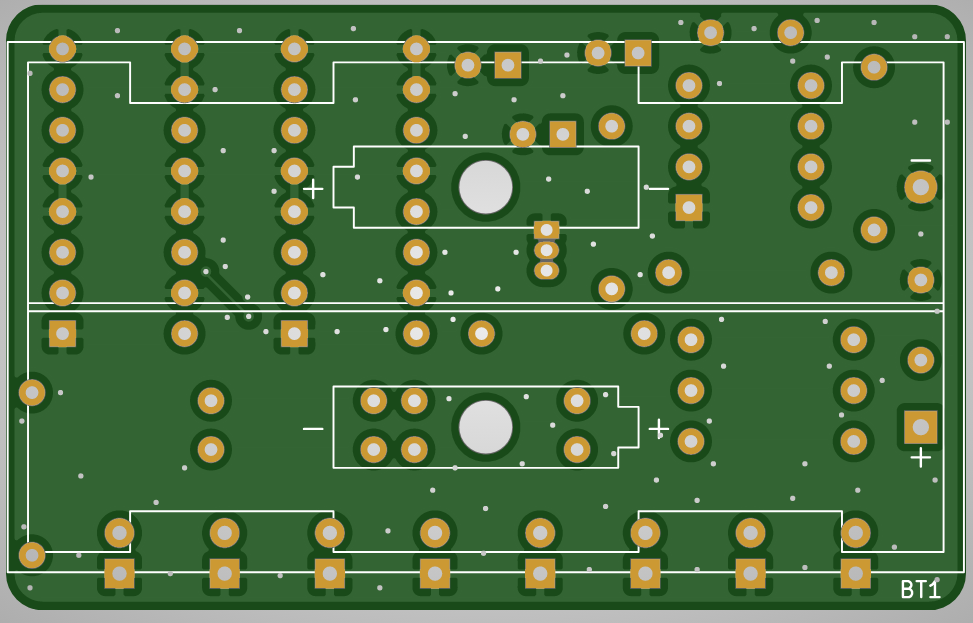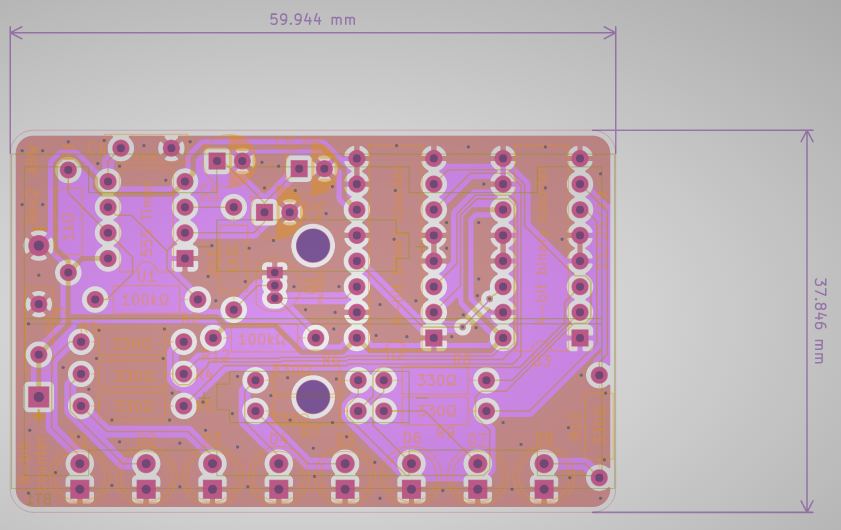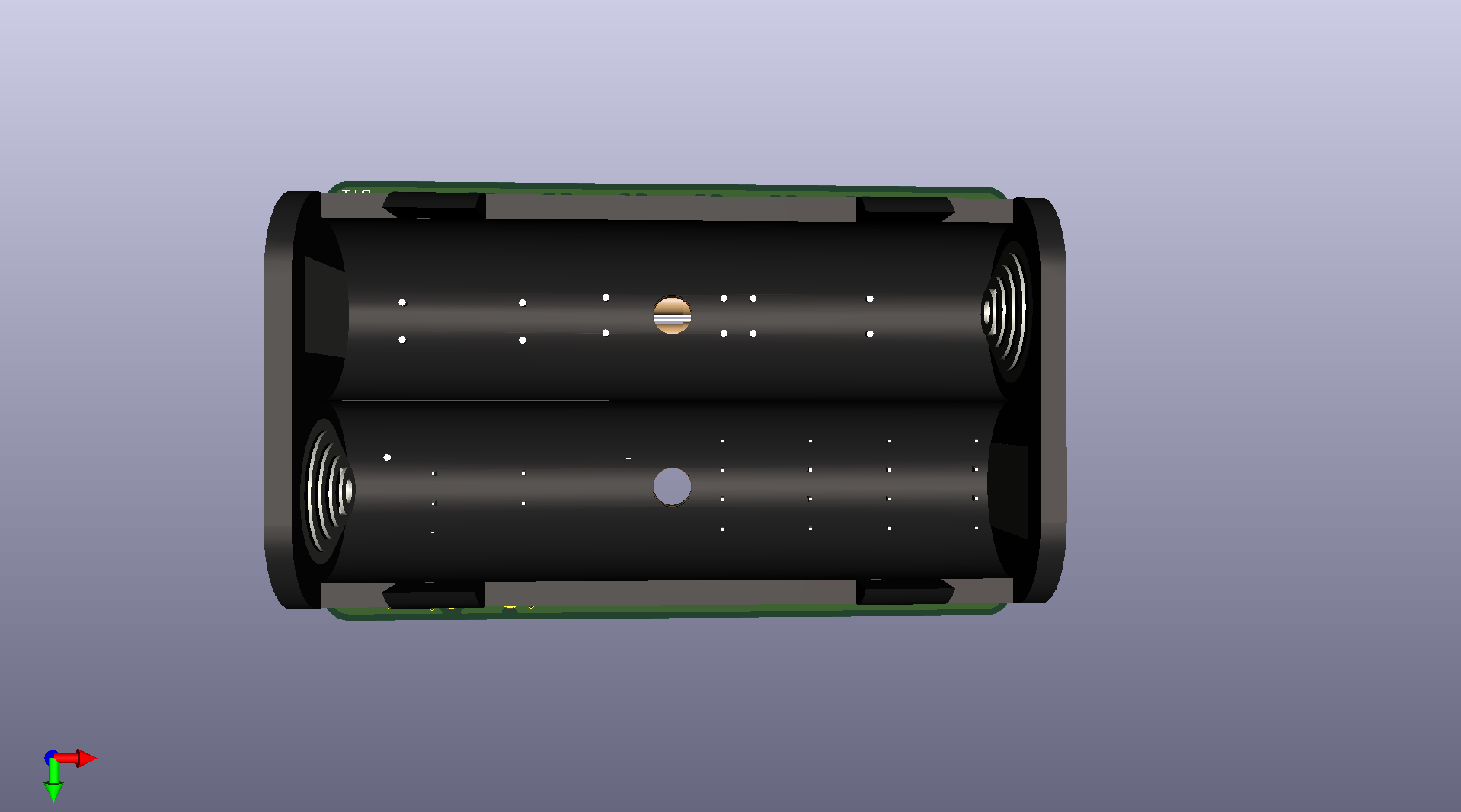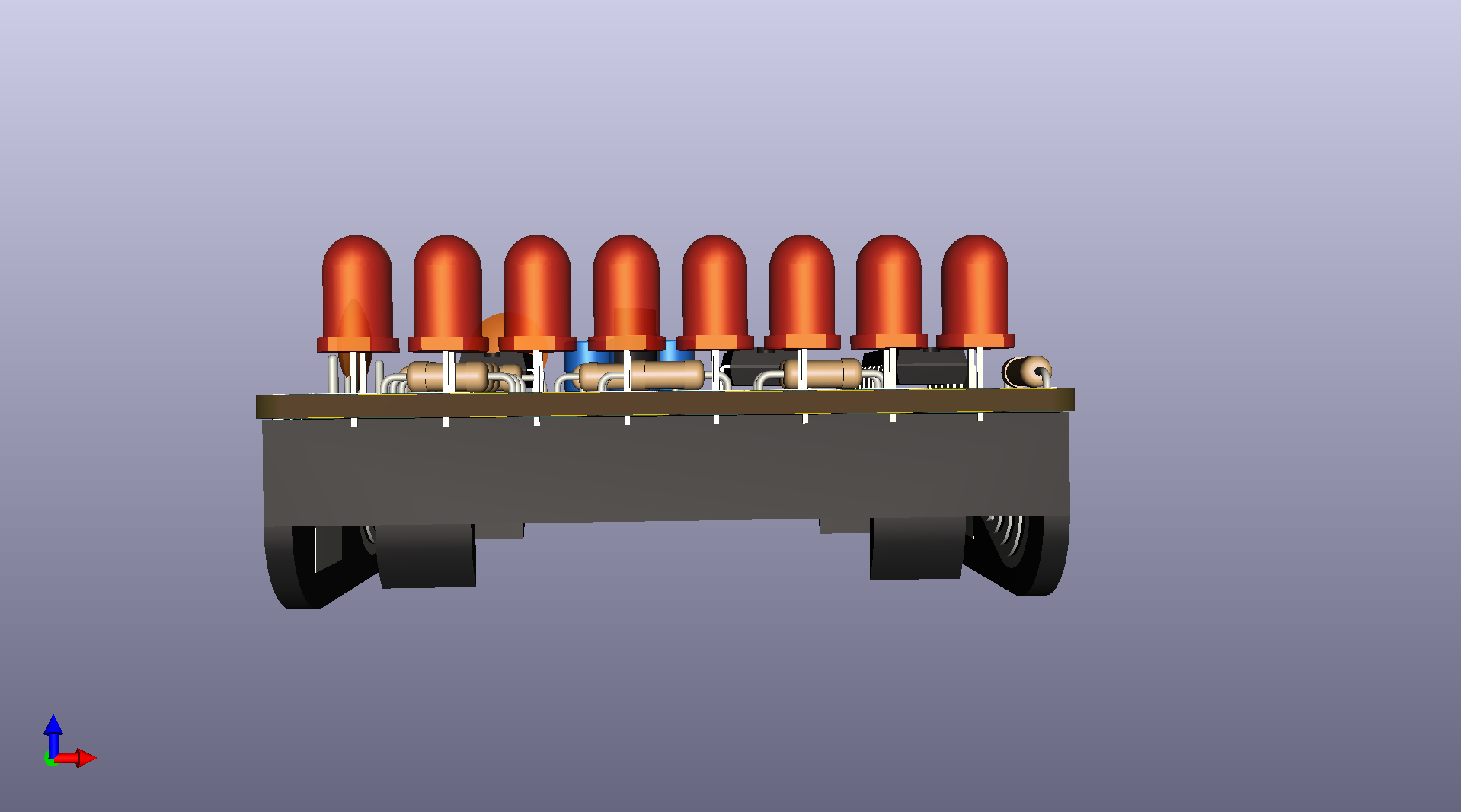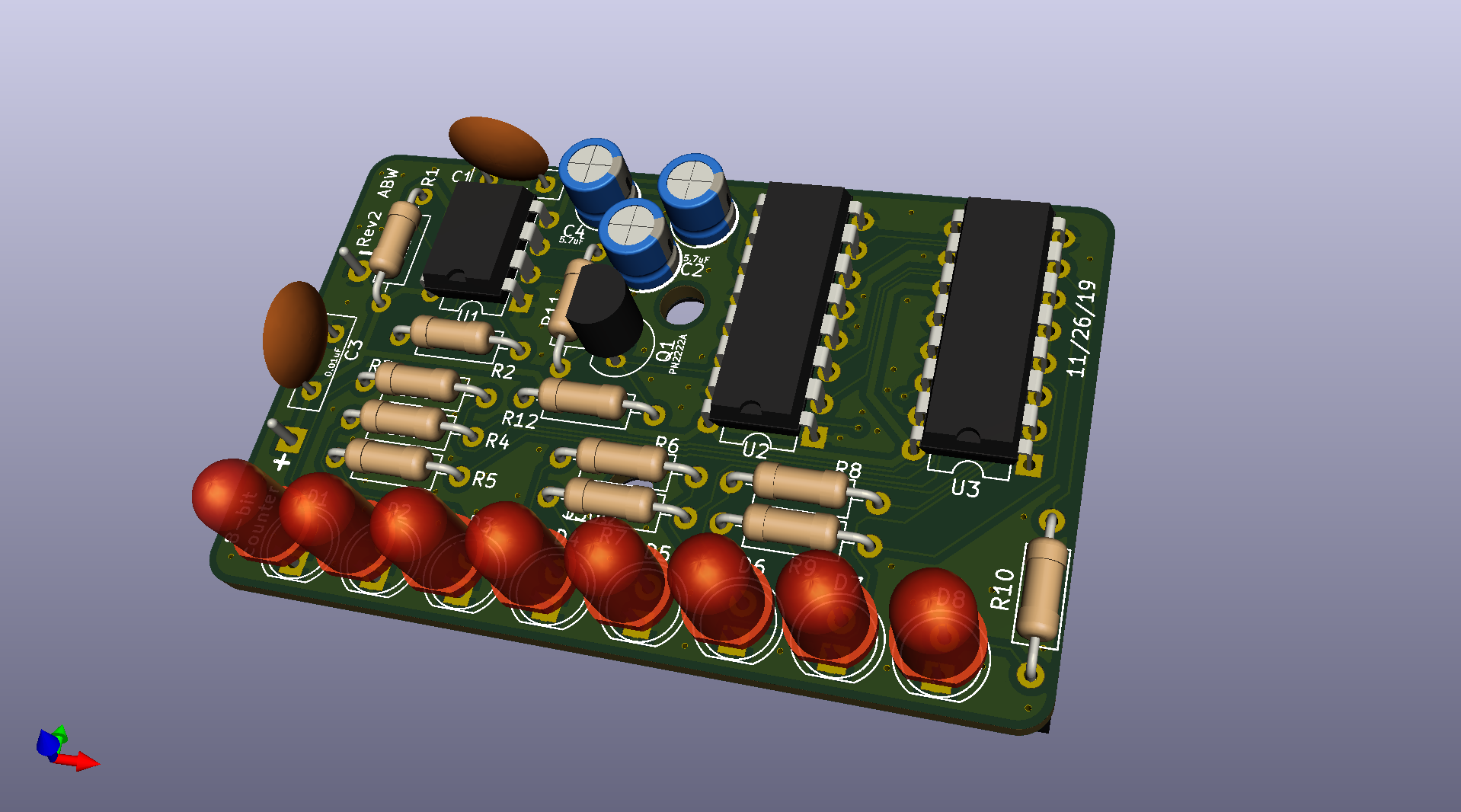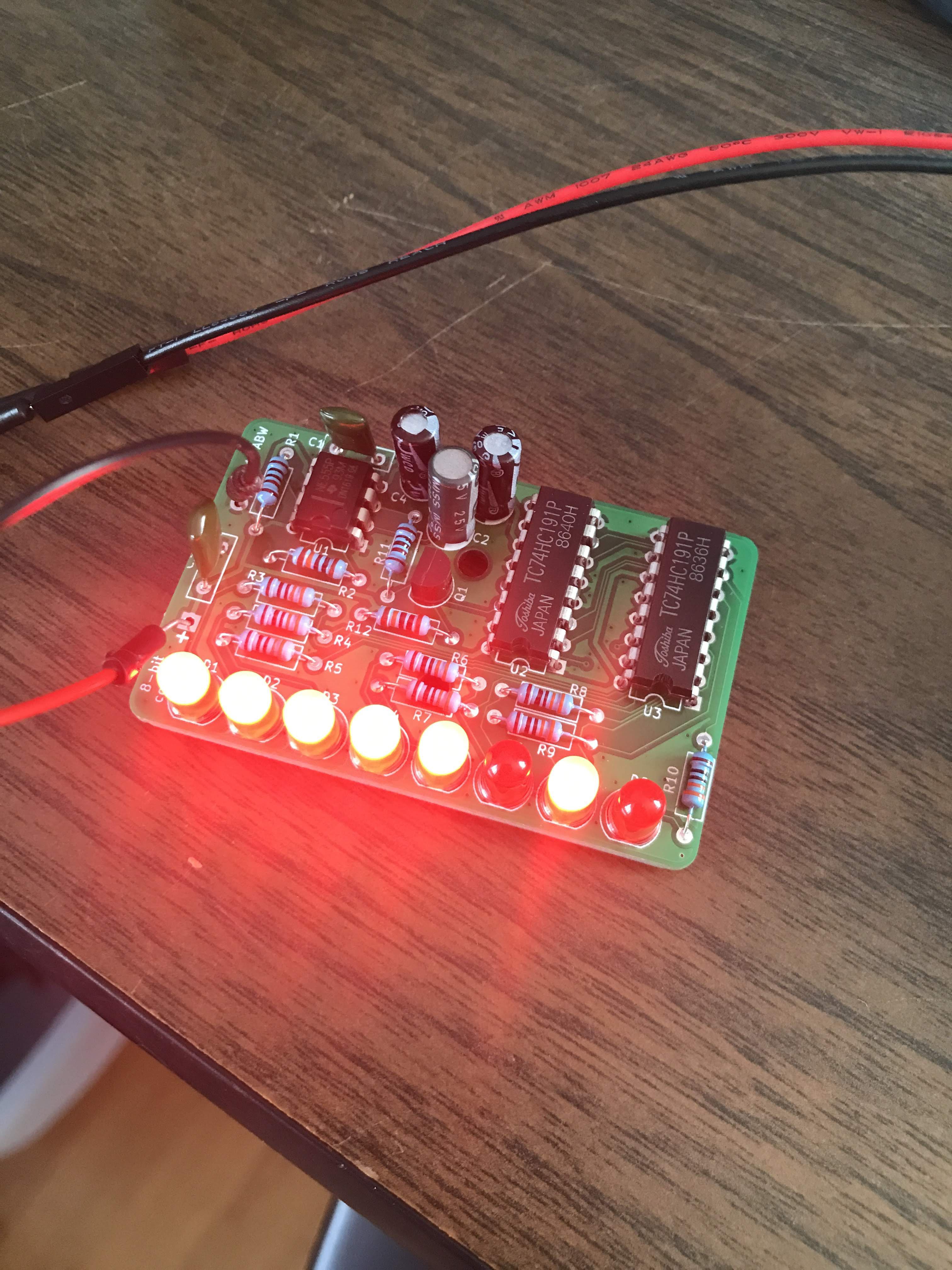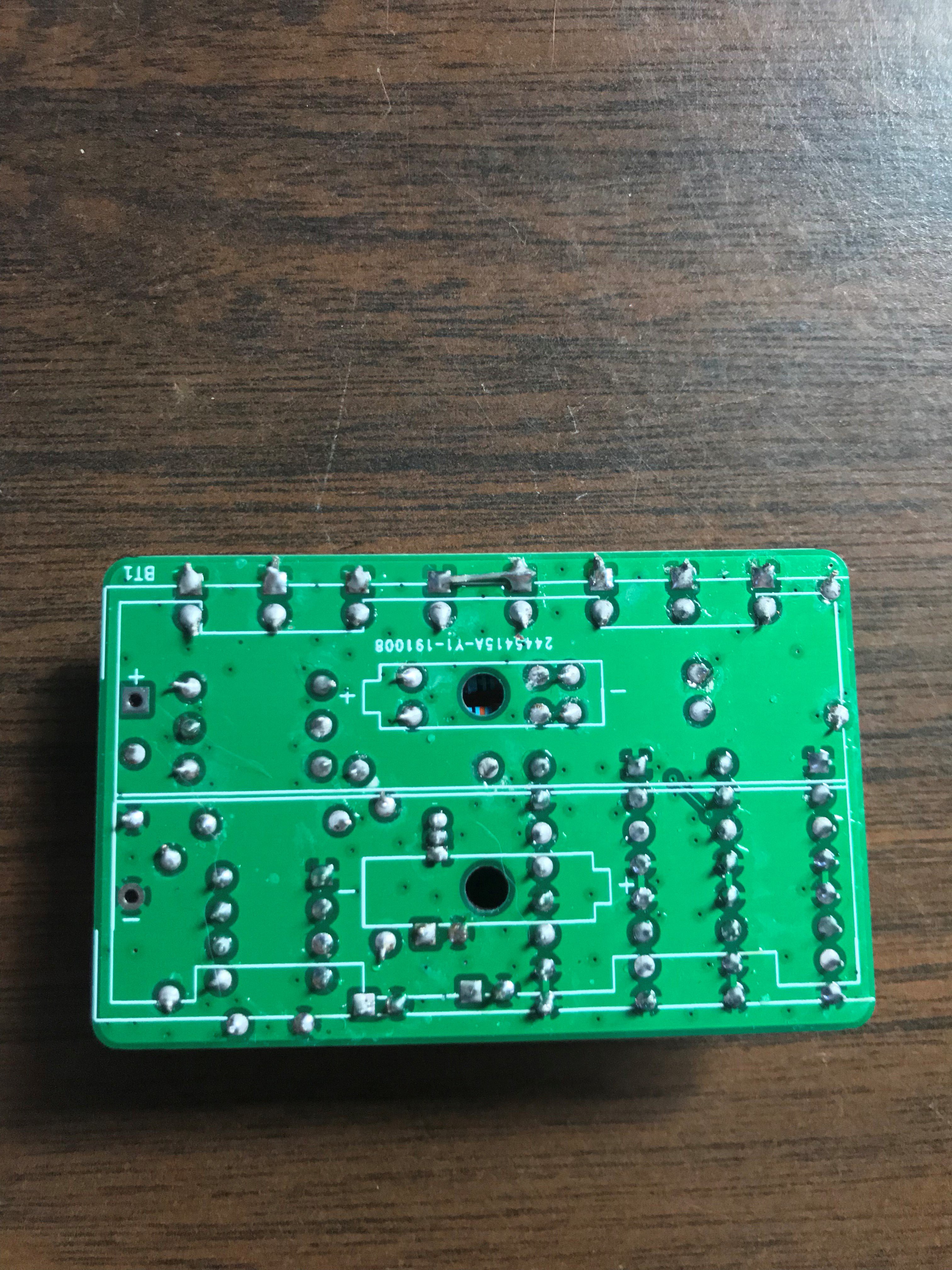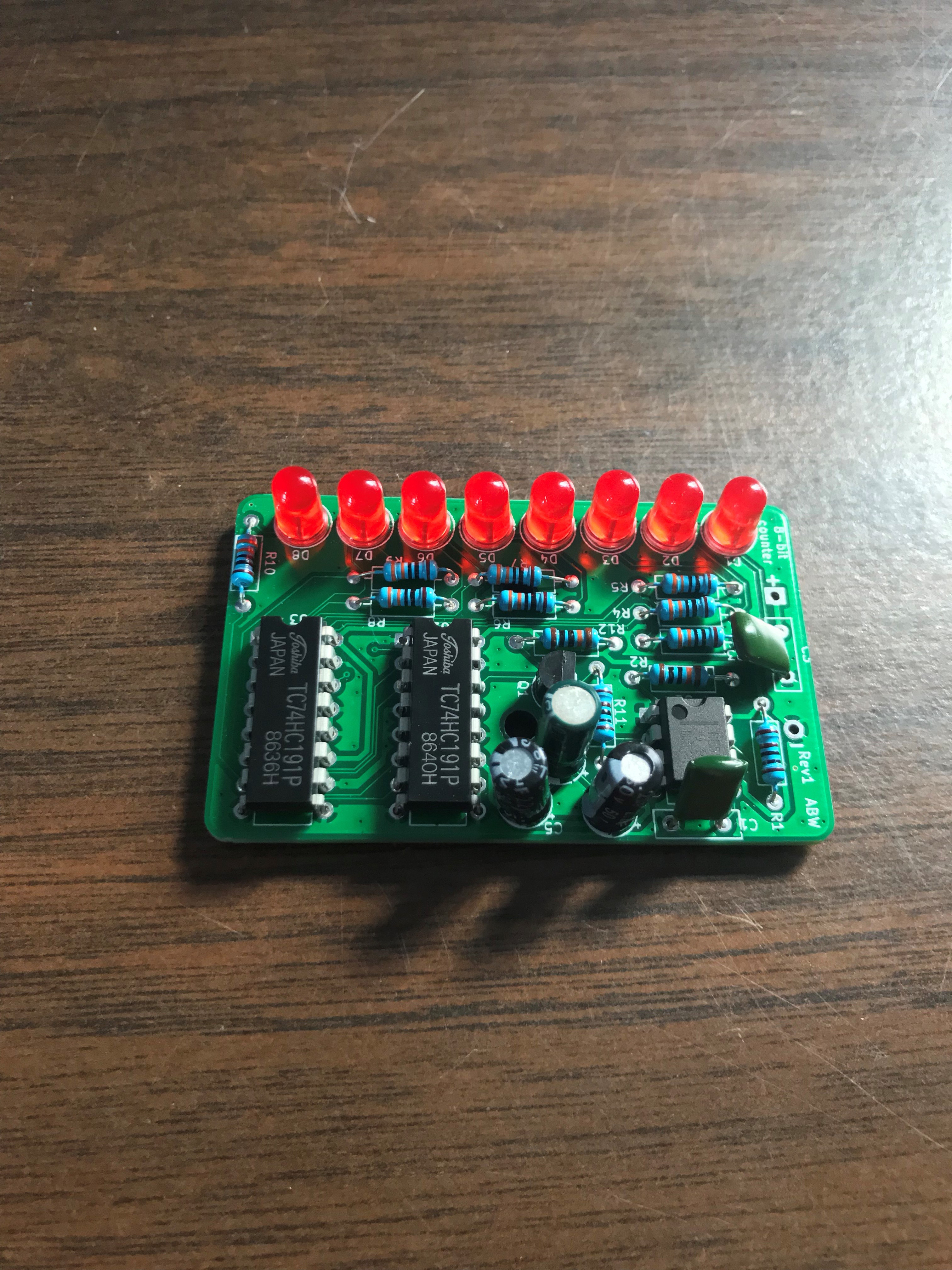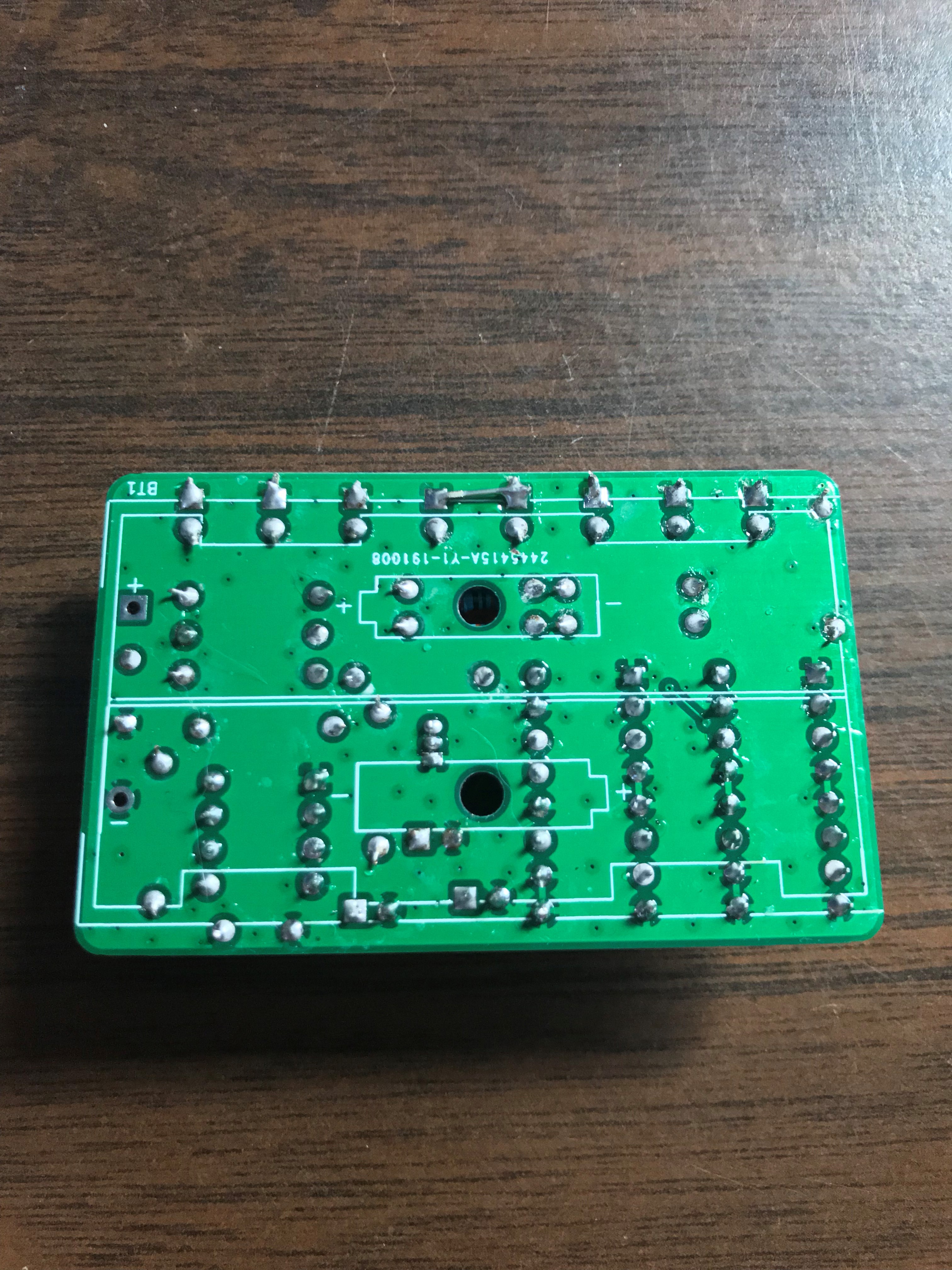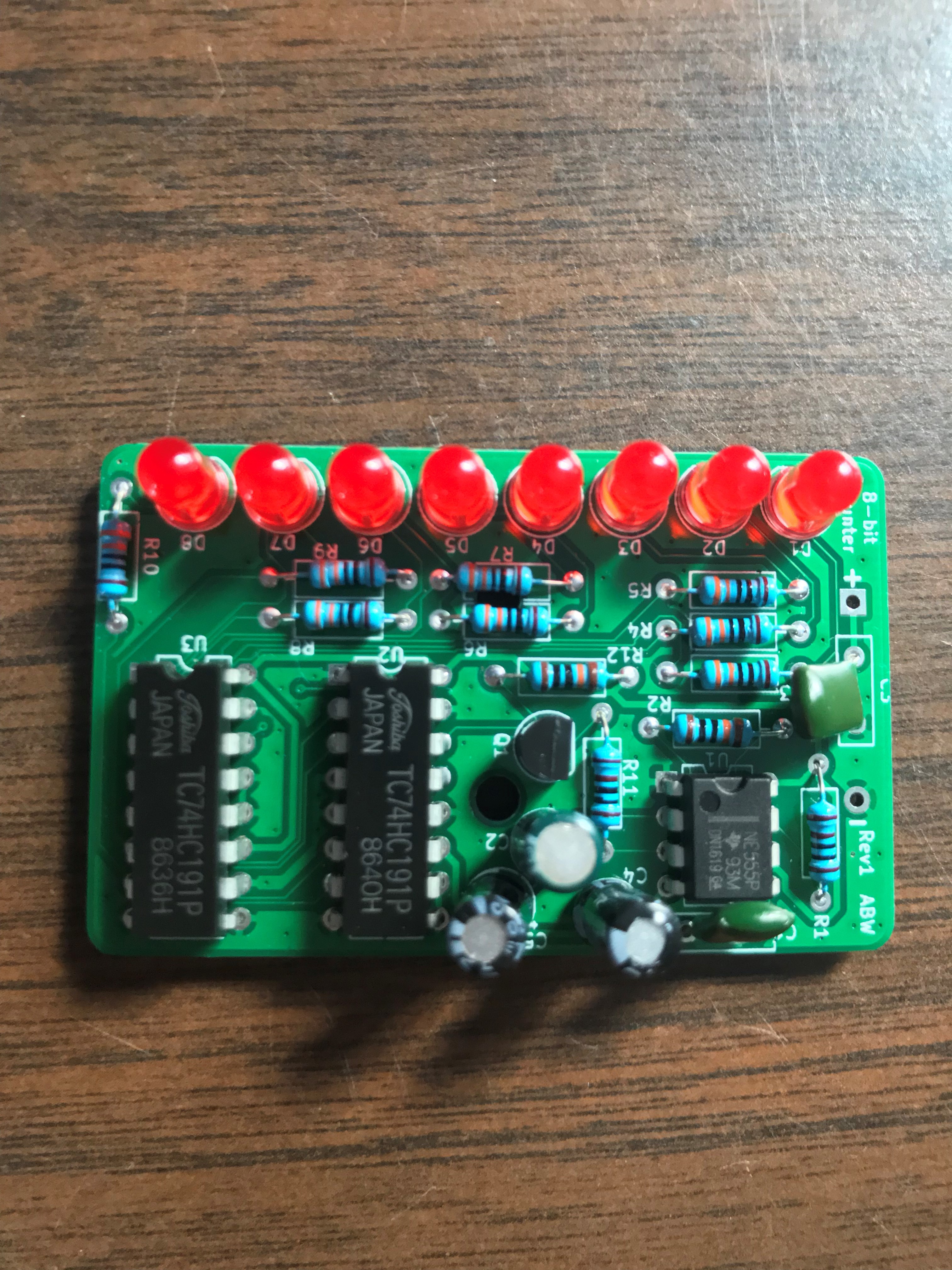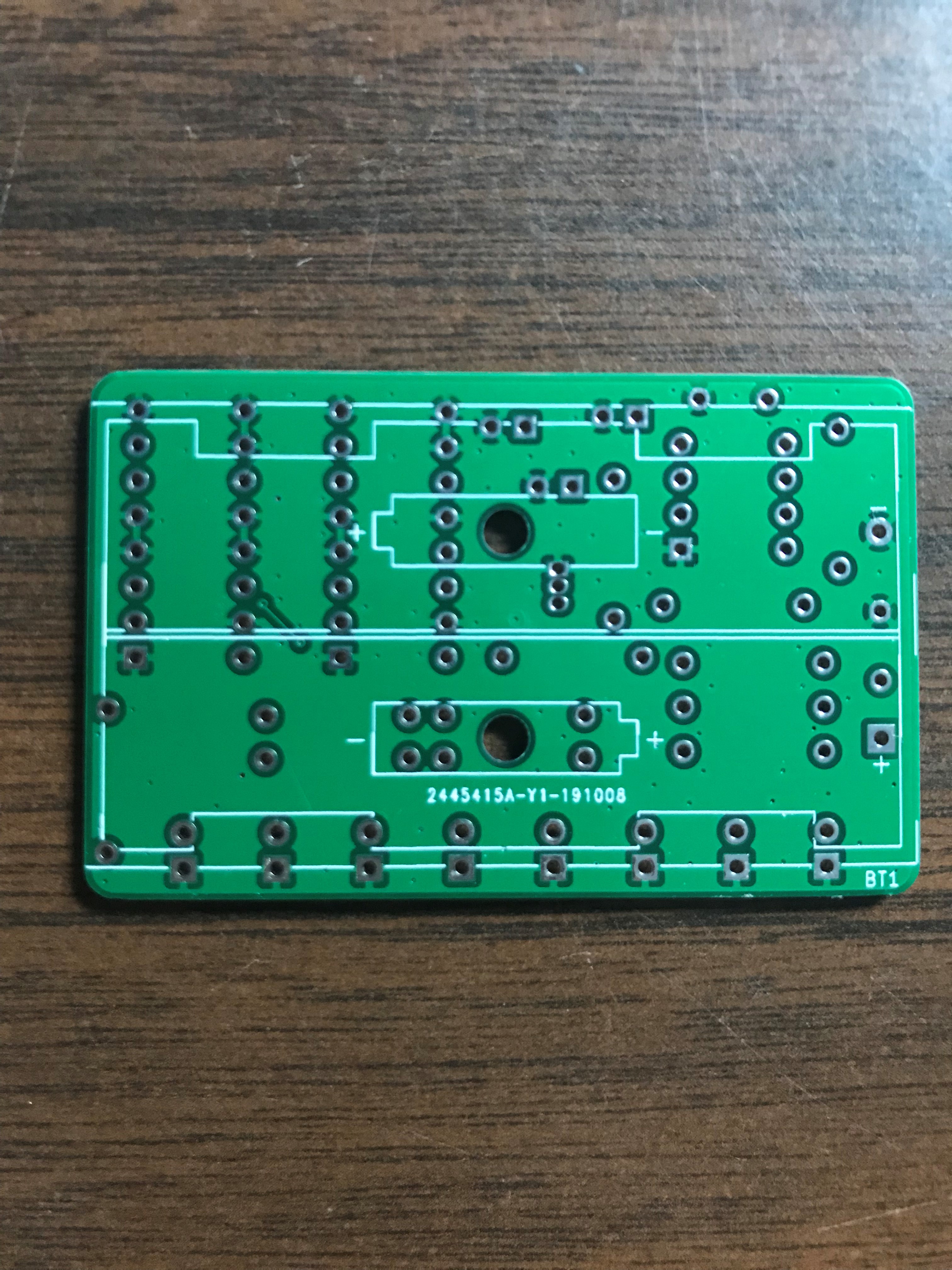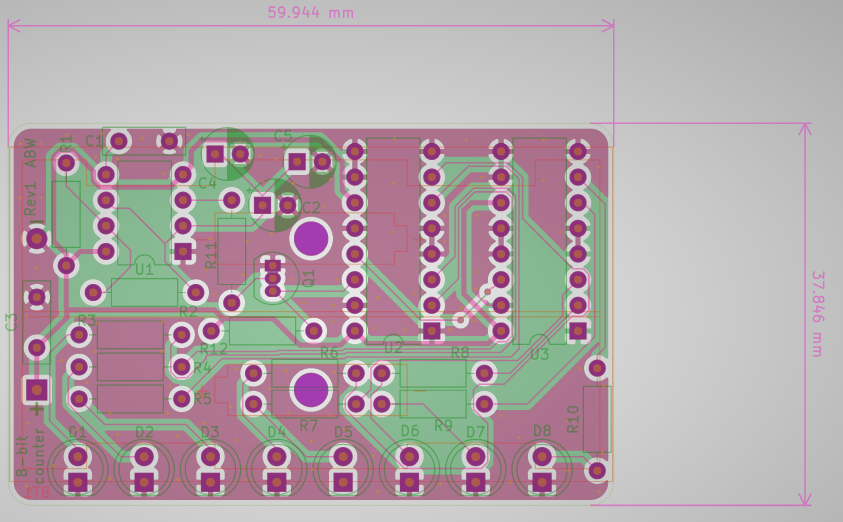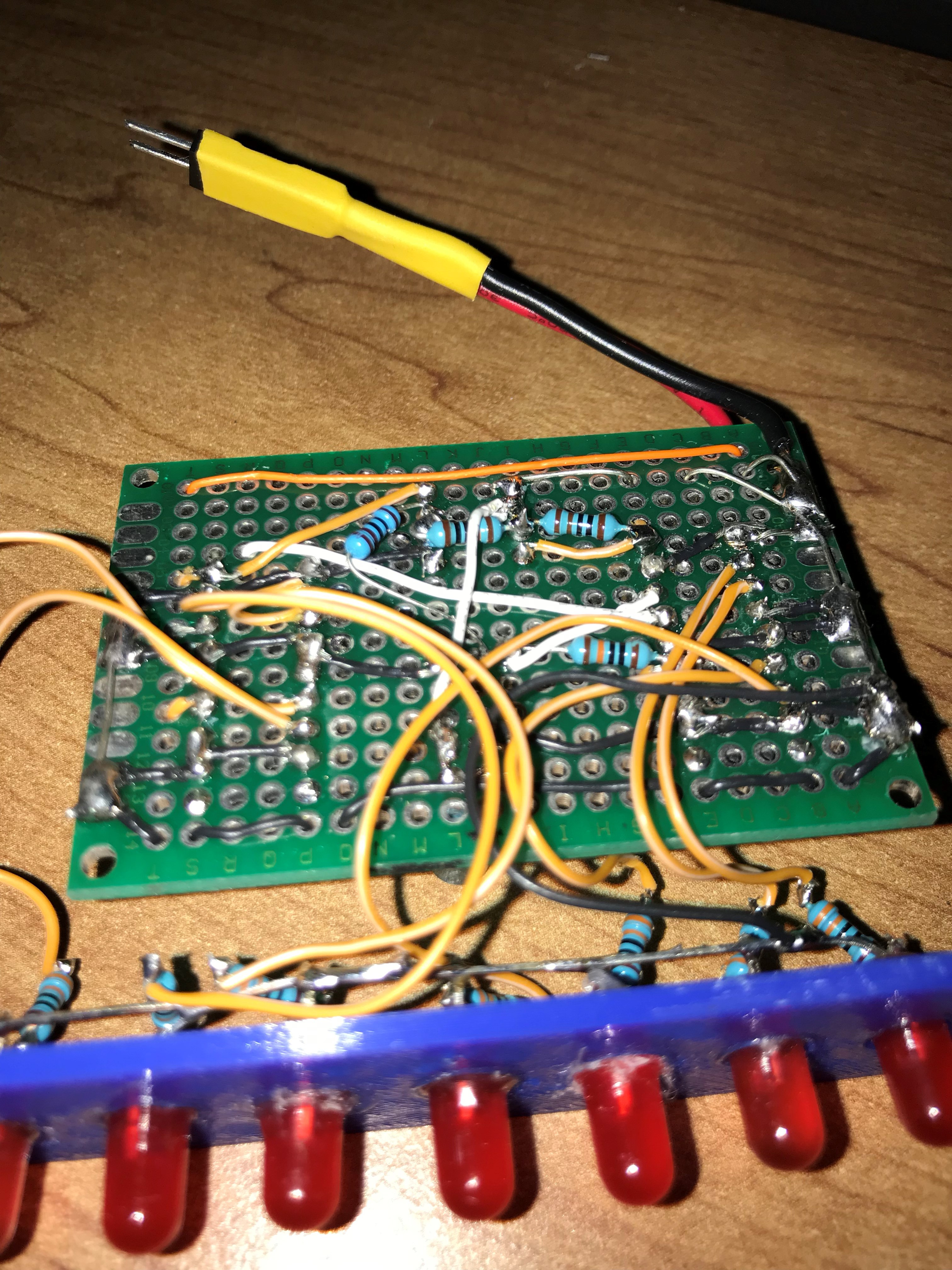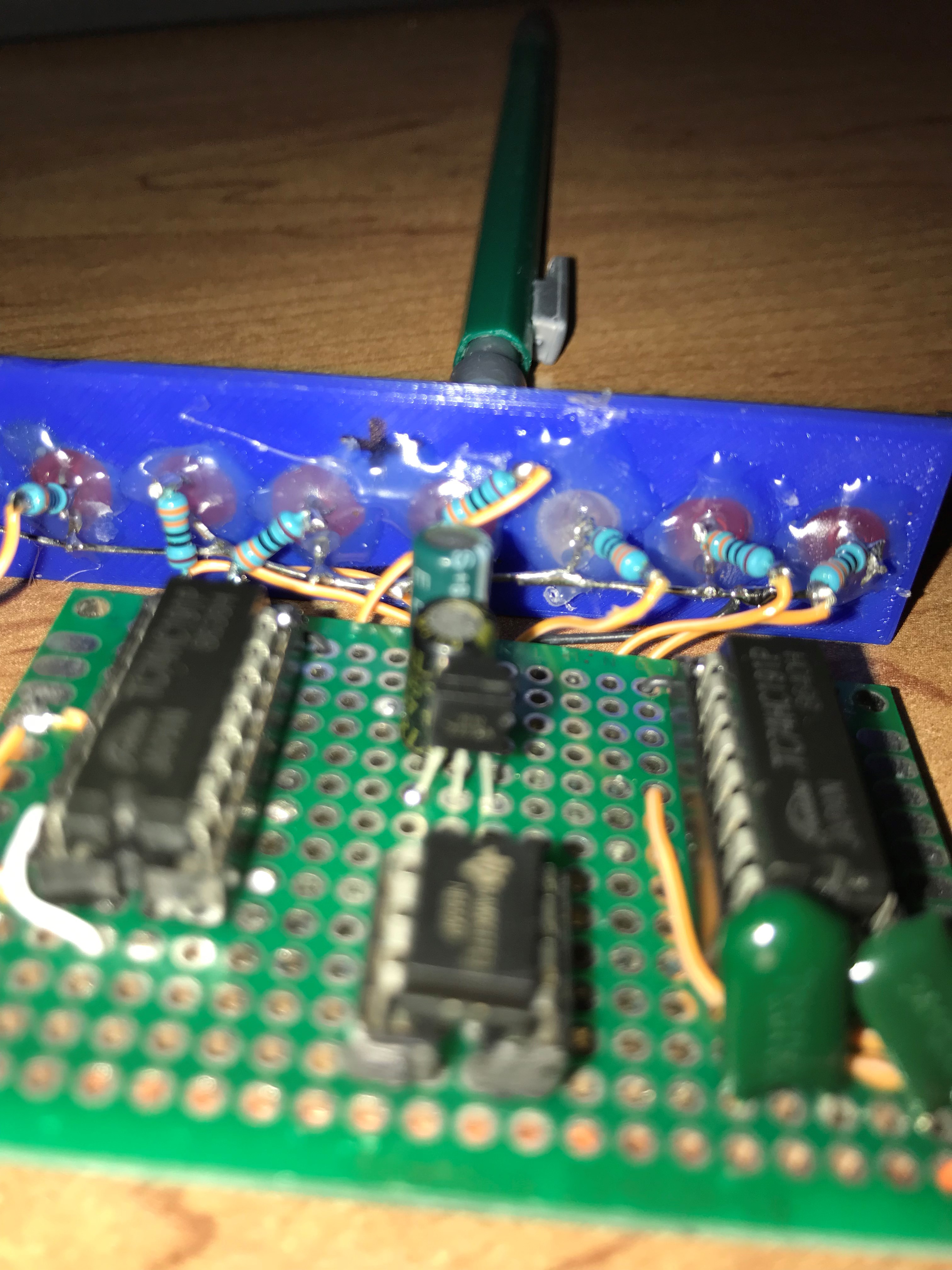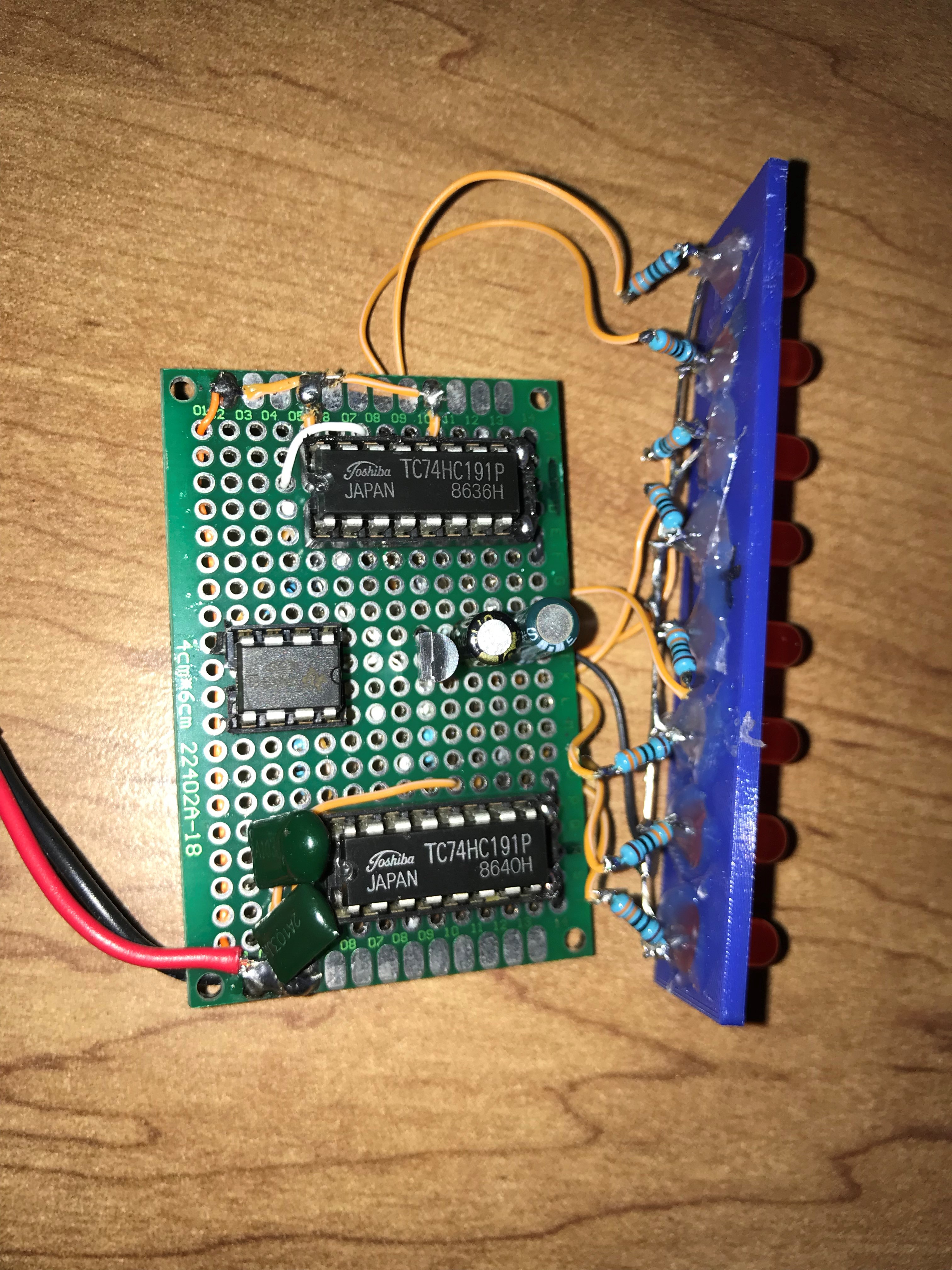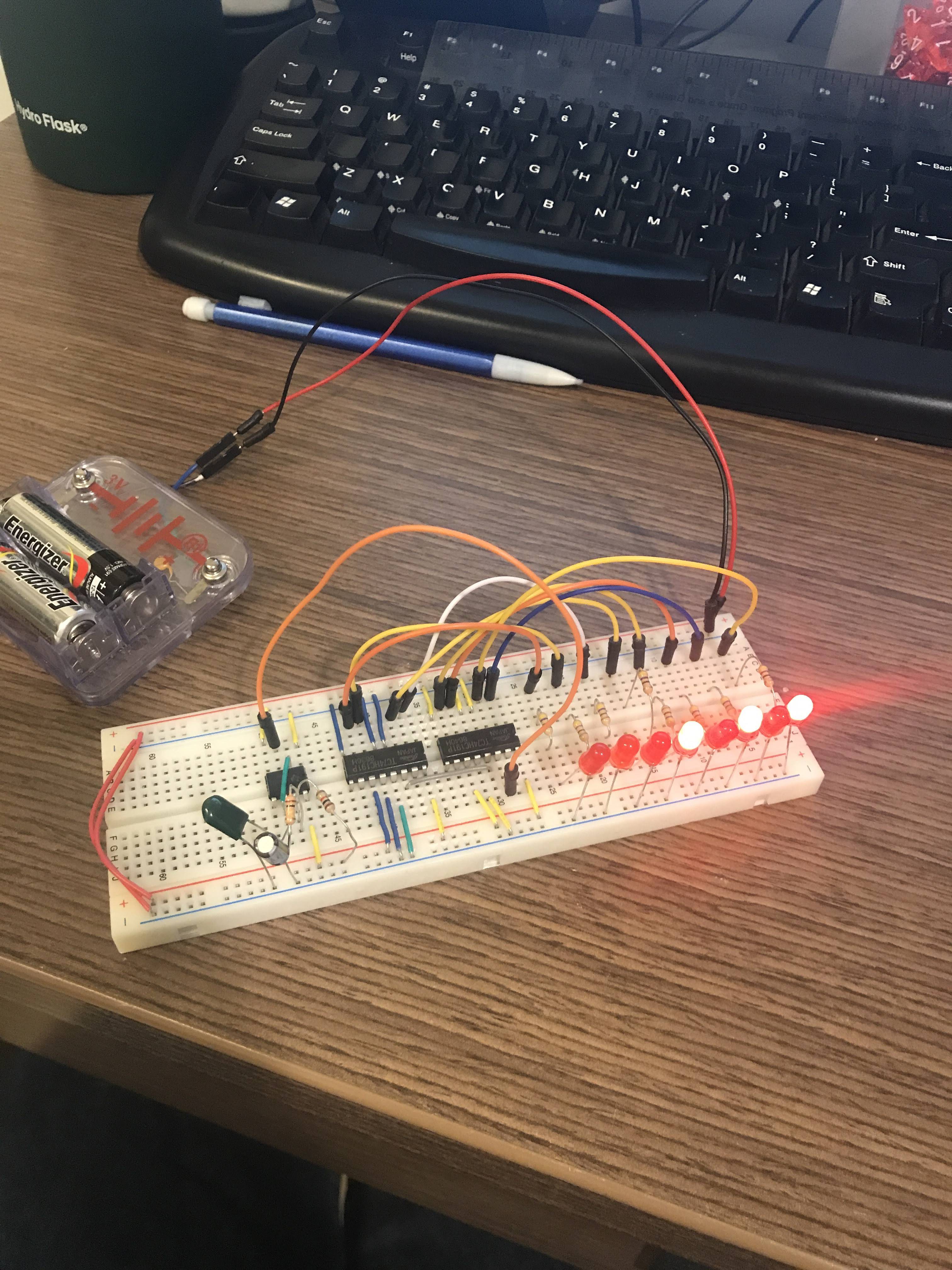-
Rev2 PCB Designed
12/16/2019 at 15:39 • 0 commentsAfter finding a couple errors with Rev1 of the PCB, I made a couple changes to the PCB design to fix them. Attached are some rendered and traceviews of Rev 2.
![]()
![]()
![]()
![]()
![]()
-
PCBs Populated
12/16/2019 at 15:30 • 0 commentsAround Thanksgiving, 2019, I finally populated the PCBs. Attached some photos of the populated boards, with at least one of them powered.
Some issues I've found: One of the LEDs cathodes was not connected to ground, which is a simple fix. Also add values to silkscreen, to make assembly easier.
![]()
![]()
![]()
![]()
![]()
-
PCBs arrived!
12/16/2019 at 15:26 • 0 commentsAt the end of October, 2019, the PCBs finally arrived! They look quite good. A couple silkscreen problems, but those were on the design end, not manufacturing end. Attached are a couple photos of the blank PCB.
![]()
![]()
-
PCB Revisions 1 Designed
12/16/2019 at 15:20 • 0 commentsBack in October 2019, I finally got around to designing a PCB for the 8-bit counter. It uses the same components as the proto-boarded version, but in a small/more organized package. The design ended up being pretty simple. I used DIP packages, 5mm LEDs, and 1/2W resistors so that everything can be soldered easily by hand. No SMD components were used.
Below are some photos of the PCB design.
-
Proto-board!
12/16/2019 at 15:12 • 0 commentsHaving verified the project with a bread-board, I decided the next step was to build a proto-board version. I think I did this at some point in February of 2019. Using some sockets for the DIP ICs in case I messed up the soldering, I soldered the parts to a proto-board. I also 3D printed a case for the proto-board (not pictured). It's powered by two AA batteries (not pictured) which are connected via some jank connectors that can be connected backwards by accident.
Below are some bad pictures of the proto-boarded version of the 8-bit counter. I will try to uploaded better/more photos once I get back to school where this is.
![]()
![]()
![]()
![]()
-
Bread-boarded Versions
12/16/2019 at 15:03 • 0 commentsBack in December of 2018, I found some 4-bit counter ICs in my school's student run MakerSpace. I bread-boarded these, using LEDs to visualize the outputs. Initially I used an Arduino as a clock. Once I verified that, I used a 555 timer to generate the clock, removing the need for an MCU.
Included are some images, which are limited in quantity and quality because I wasn't good about logging this project (as you can probably guess by the date of this post).
![]()
8-bit Counter
Ever want a display that slowly counts up in binary to 8-bits? Well this project does just that!
 sirmylesavery
sirmylesavery